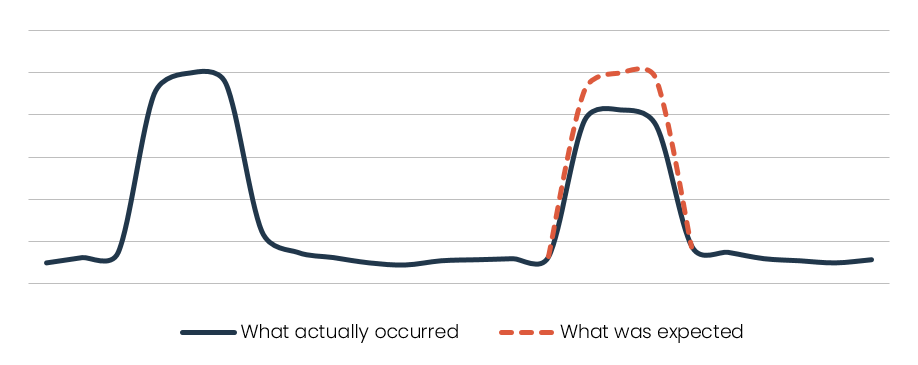Post-Plan Sales Compensation Adjustments: The Wrong Action Too Late
Unforeseen market conditions—such as manufacturing problems, an FDA ruling, or a new medical study finding—as well as national goals set too high can result in the sales force making little to no money even though these circumstances are outside of their control. In order to mitigate the impact of such circumstances, post-plan period sales compensation adjustments of some form are often taken after the plan period has ended to grant the sales force additional compensation. Though sales compensation mitigation—what we refer to as post-plan period mitigation—is a nice gesture, its isolation from the actual activity of the plan period poses several limitations that call into question its effectiveness. Let’s delve into some of the factors that make post-plan period mitigation ineffective and present an alternative that keeps the sales force motivated, engaged and driving sales during the plan period.
What is Post-Plan Period Mitigation?
Post-plan period sales compensation adjustments seek to mitigate the impact of circumstances outside of the sales force’s control that caused them to earn little to no bonus. Though corrective actions (such as those described below) show the sales force that they are not being held accountable for circumstances outside of their control, they have significant limitations.
Pay Additional Set Bonus
Pay all sales representatives a set bonus regardless of their performance during the plan period (i.e., pay all representatives $500 in addition to what they were paid)
Institute Minimum Bonus
Pay all representatives a sufficient bonus to raise them above a defined minimum (i.e., pay representatives the difference between their payout and a minimum of $600)
Add Attainment Points
Add a set number of attainment points to each representative’s attainment and pay bonuses on this adjusted attainment (i.e., add 7 attainment points to each representative’s attainment)
Three Limitations of Post-Plan Period Mitigation
Limitation 1: Does not motivate
Because the corrective action is taken after the plan period has ended, sales representatives have no way of knowing if a corrective action will be taken as they plan their selling activity. Rather than holding out hope for a mitigation that may or may not be coming, sales representatives will likely abandon the underperforming product and instead push the product with which they know they can earn bonus. Even if sales representatives anticipate that a corrective action will occur, they do not know what level or form that action will take.
Limitation 2: Pays for non-performance
Since the action that the sales force takes during the plan period is not a result of the post-plan period mitigation, post-plan period mitigation essentially pays for non-performance.
Consider Tim, a sales representative selling a seasonal flu product. Flu season in his region is not as strong as expected (see below) and the entire market falters. Tim realizes that he cannot make goal for his seasonal product, so he abandons it and concentrates his efforts on his other products. Since the entire market is down (not just his product), his lack of action causes his product to lose market share. After the plan period ends, the company takes corrective action and institutes a minimum payment level of $800 on the seasonal product, paying all representatives the difference between $800 and what they earned.
So Tim, who not only abandoned the seasonal product but also caused it to lose market share, is paid $800. The corrective action is not just paying for non-performance (since Tim dedicated very little time and effort to the product), but it is actually paying for negative performance (since Tim’s lack of action caused the product to lose market share).
Limitation 3: Is not equitable
A third limitation of post-plan period mitigation is that, depending on the form of corrective action taken, it can be inequitable.
Let’s go back to our example above. Tim’s colleague, Jill, manages a territory similar to his in that it is also seeing a weaker flu season than expected. Since the entire market is down, Jill knows that all products in the therapeutic class will suffer, not just hers. In an effort to maintain her market share, Jill continues to push her seasonal product. Though she is successful in doing so, she still does not make goal and the company’s corrective action results in a payment of $800 to her.
So Jill, who dedicated resources to the seasonal product and maintained its market share, is paid the same amount as Tim, who abandoned the product and lost market share. Is this fair? Jill would probably think not and she would be right.
Alternative: Contingency Plans
Since post-plan period mitigation has such considerable limitations, how should the sales force be protected when unforeseen market conditions occur? A powerful alternative to post-plan period mitigation is a contingency plan. A contingency plan is designed to equitably compensate the sales force when something unforeseen in the marketplace occurs while still remaining fiscally responsible. Contingency plans, published as part of the sales compensation plan, outline an alternative pay methodology that is triggered should predefined conditions be met, thereby keeping the sales force motivated during the plan period because they know what to expect if something outside of their control occurs. Thus, the sales force is less likely to abandon the underperforming product because they know they can still earn bonus that will reflect their individual performance.
Conclusion
Protecting the sales force from unforeseen market conditions is invaluable to earning their trust and loyalty. However, when such actions are taken after the plan period has ended, they cannot adequately encourage an already despondent, demotivated and disenchanted sales force and can actually be inequitable and pay for non-performance. In contrast, contingency plans keep the sales force motivated and energized because they know in advance what is expected of them, even when national goals are not being met. Even further, contingency plans, when designed correctly, result in payouts that more accurately reflect actual performance.










